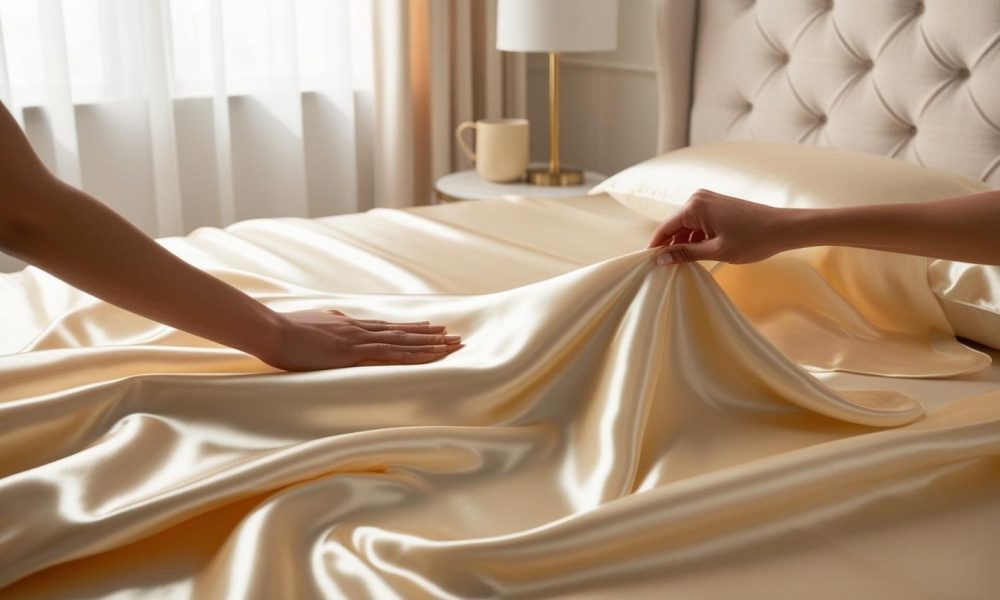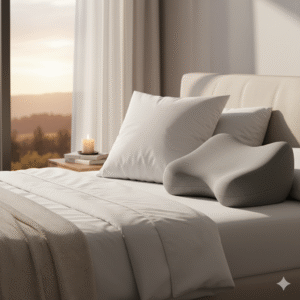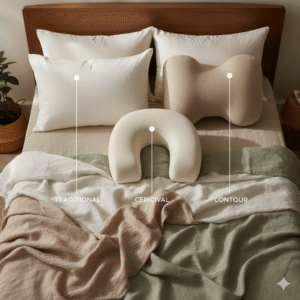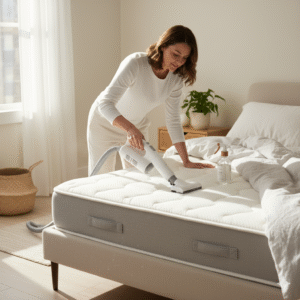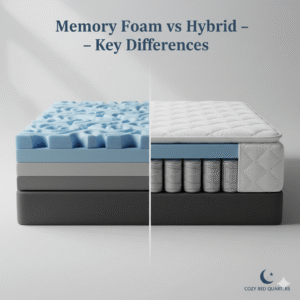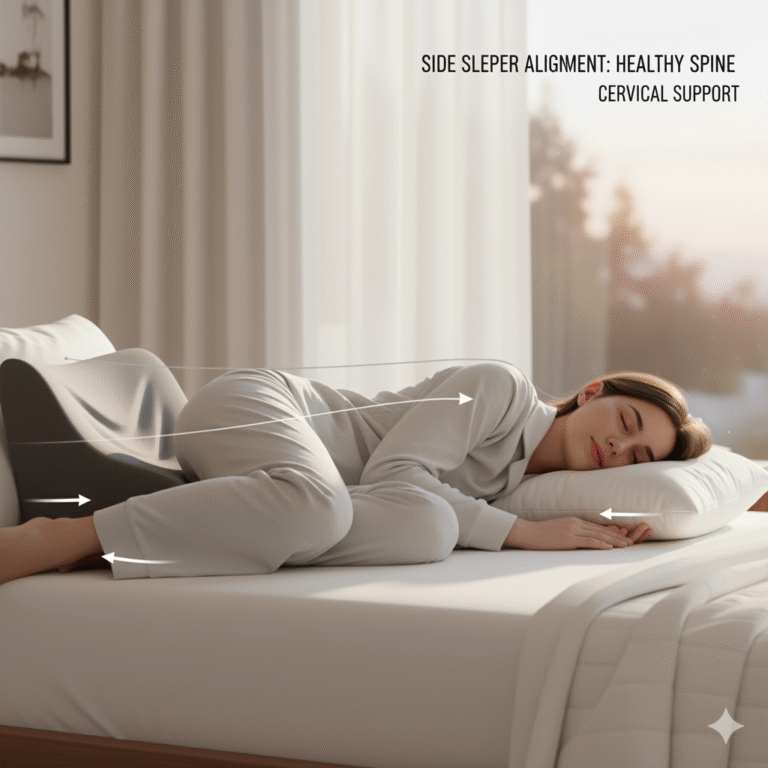Best Bed Material
Finding the best bed material can transform how you sleep, recover, and feel each morning. This guide compares today’s most popular mattress builds and shows how to match materials to your body, budget, and values.
Key Takeaways: Best Bed Material
- Answer first: The best bed material depends on pressure relief needs, cooling, and support.
- Memory foam = deep contouring; latex = responsive, sustainable support.
- Innerspring breathes best; hybrids blend bounce, airflow, and cushioning.
- Check certifications (GOLS, GOTS, OEKO-TEX, CertiPUR-US) for safer materials.
- Eco upgrades: organic bedding, natural latex, and recycled-steel coils.
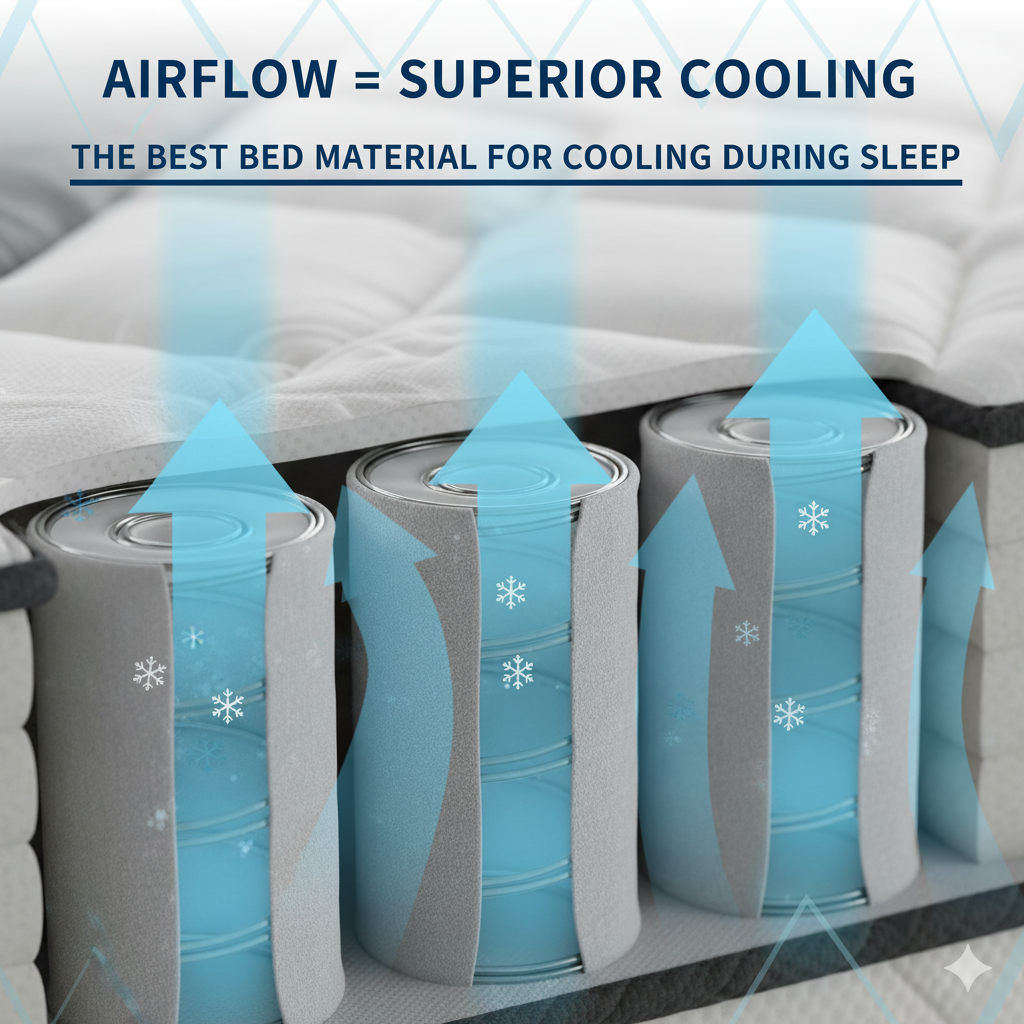
Why Material Choice Matters
Your mattress core dictates support, airflow, durability, and motion isolation. Memory foam excels at pressure relief, latex offers springy natural support, coils add breathability and edge strength, and hybrids combine them.
Choosing well can reduce nighttime wake-ups and improve alignment. If you lean eco-conscious, prioritize organic bedding and latex sourced from certified plantations. For background on how materials influence rest, see our guide on How Your Mattress Affects Sleep Quality.
Memory Foam: Pressure-Relieving Contour (Answer First)
Choose memory foam if you want deep contouring with minimal motion transfer. It molds to curves, easing pressure at shoulders and hips—ideal for side sleepers and couples.
Pros
- Top-tier pressure relief and motion isolation
- Great for side sleepers and sore joints
- Widely available, often budget-friendly
Cons
- Can sleep warm without cooling tech
- Slower response than latex or coils
- Quality varies—check foam density and certifications
Shopping tip Certifications: Look for CertiPUR-US foams and cooling features such as open-cell or gel infusions. See our Best Memory Foam Mattresses for Side Sleepers for curated picks.
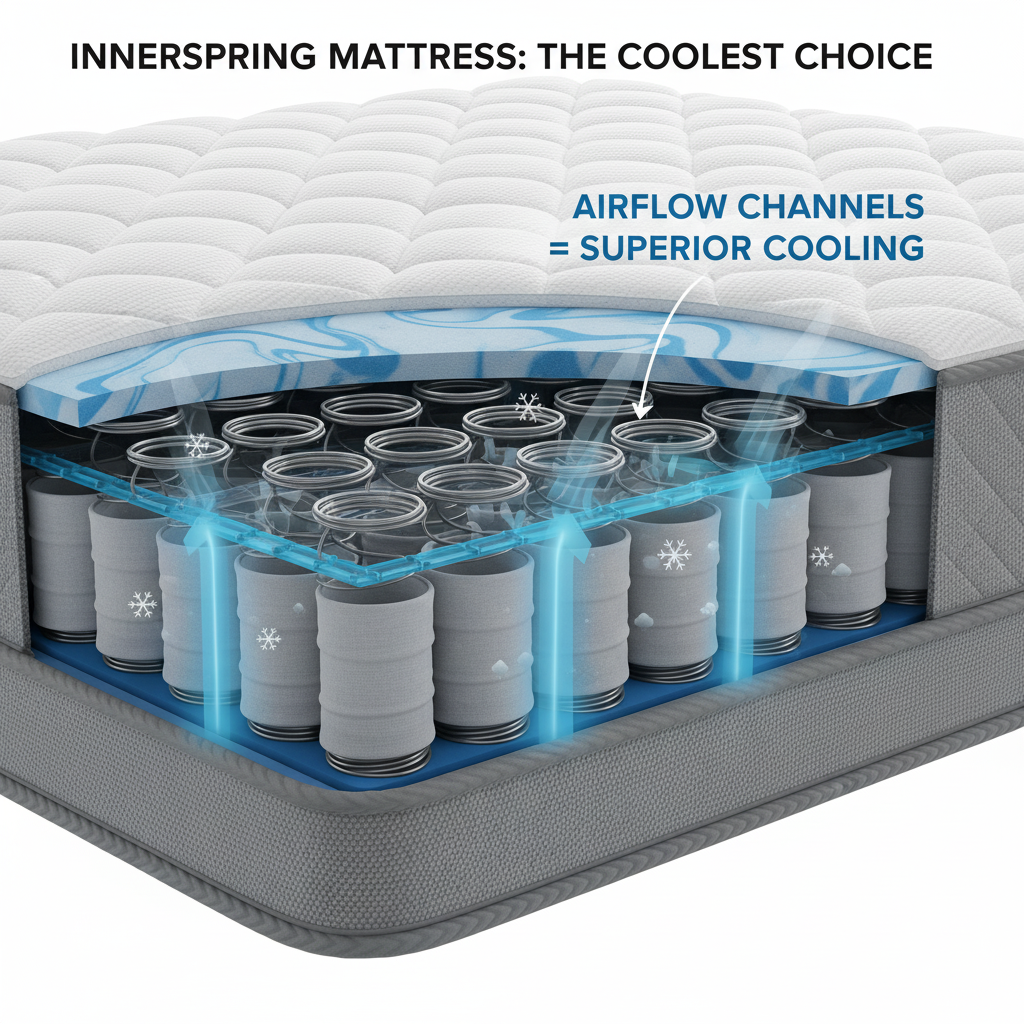
Latex: Eco-Friendly, Buoyant Support (Answer First)
Latex is ideal if you want responsive support and natural materials. It’s durable, springy, and resistant to dust mites and mold—helpful for allergy-prone sleepers.
Dunlop latex feels slightly denser and more supportive, while Talalay tends to feel airier and cushier. Many eco-buyers pair latex cores with eco-conscious sheets to reduce microplastics in their sleep environment.
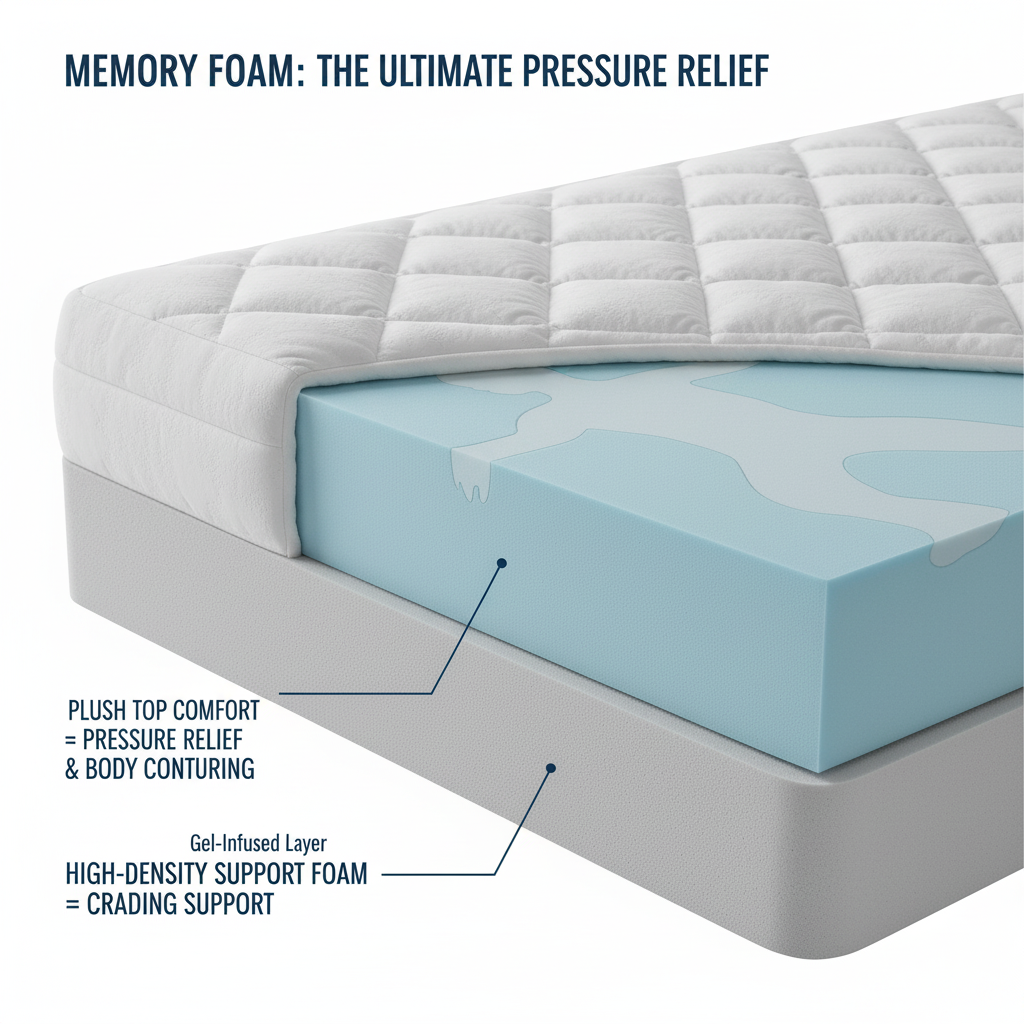
Innerspring: Classic Bounce and Airflow (Answer First)
Pick innerspring if you sleep hot or prefer a traditional, buoyant feel. Coil units promote airflow and strong edges, while pocketed coils add motion control and targeted zones.
Consider coil count, gauge, and zoning. Many models add a plush Euro top for surface relief while preserving the coil lift. For a deeper primer, see our Bedding Materials Guide.
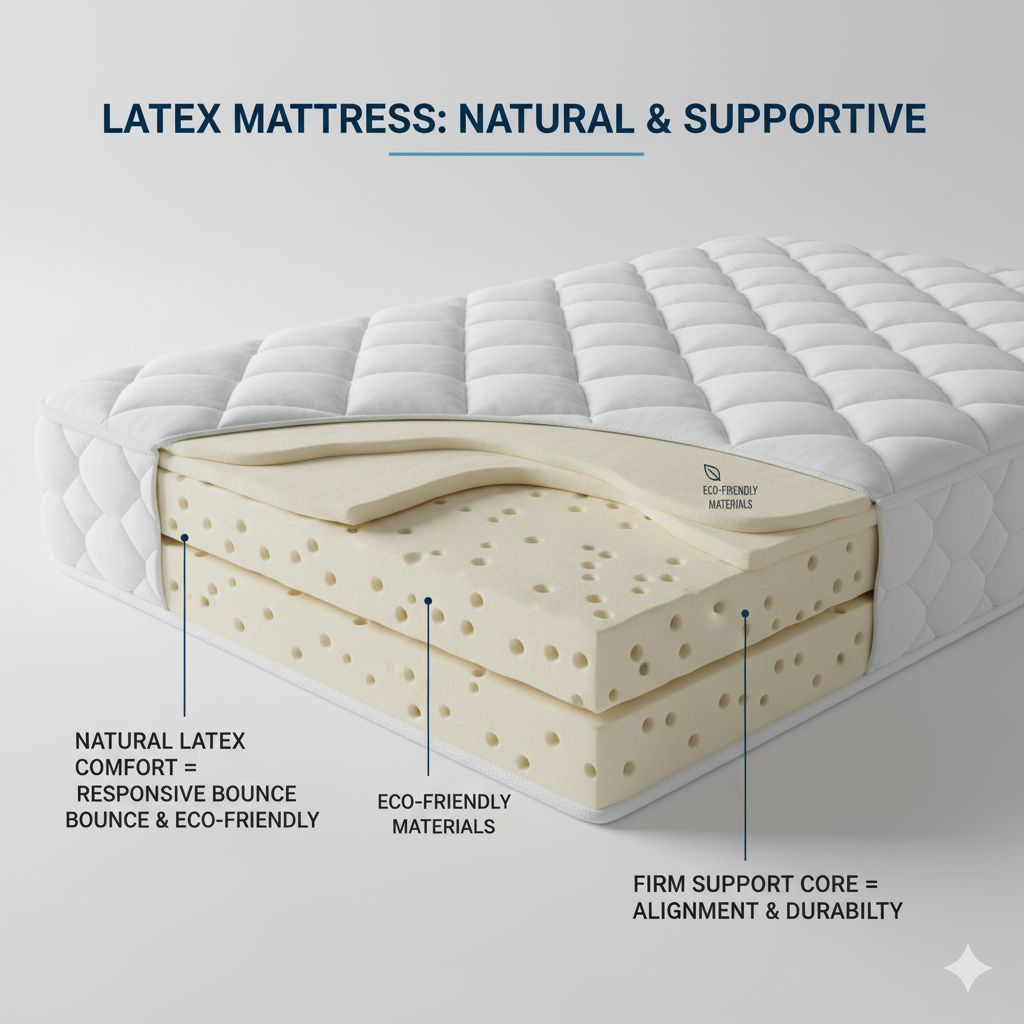
Hybrid: Balanced Comfort + Support (Answer First)
Hybrids blend foam or latex comfort layers with a coil base, aiming for “just-right” balance. They suit combination sleepers and couples who need pressure relief without losing bounce.
Look for zoned coils, reinforced edges, and transition layers that prevent “bottoming out.” For more context, explore our Cozy Bedding Materials Guide.
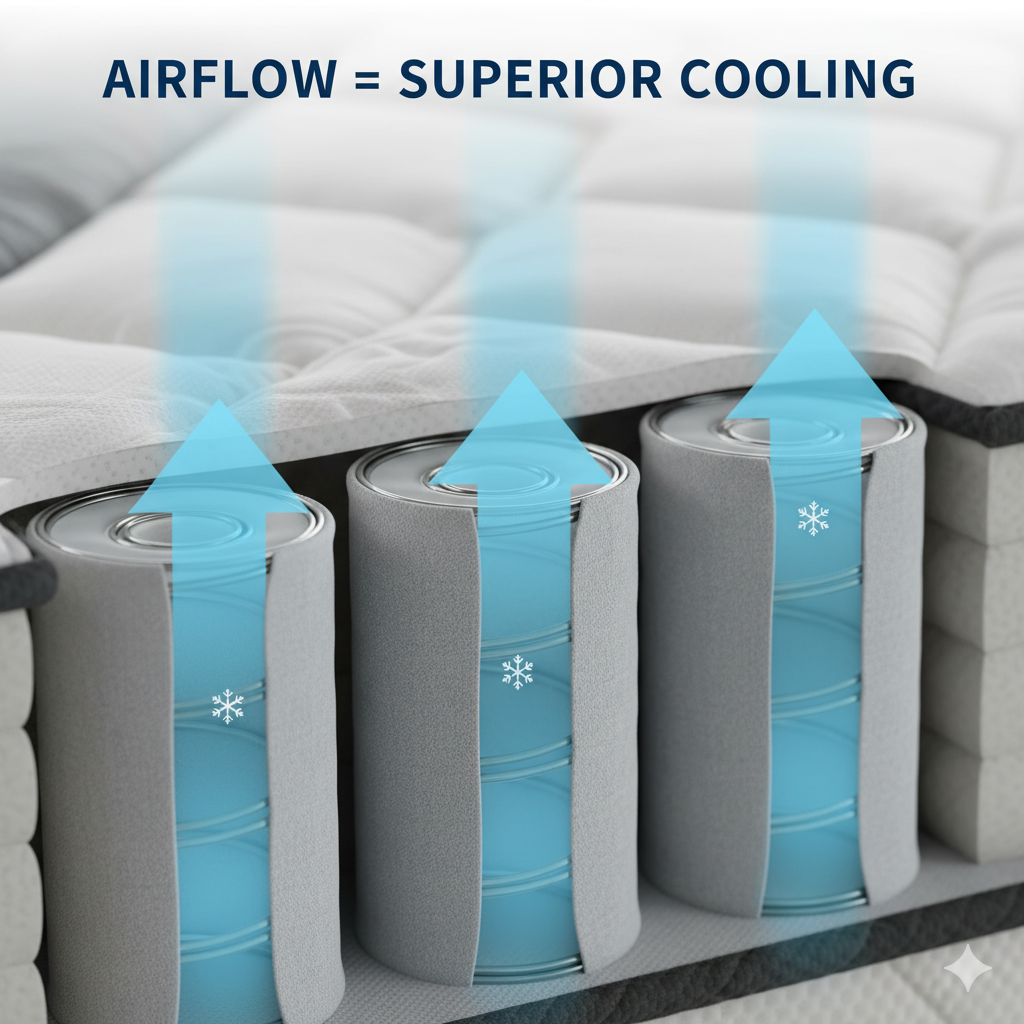
Eco-Friendly vs. Conventional Bedding
Eco options: GOLS latex, GOTS cotton, responsibly sourced wool, and recycled steel coils.
Conventional options: polyurethane foams and polyester blends—affordable and widely available.
Learn how sustainable choices add comfort and cut allergens in Benefits of Eco-Friendly Bedding.
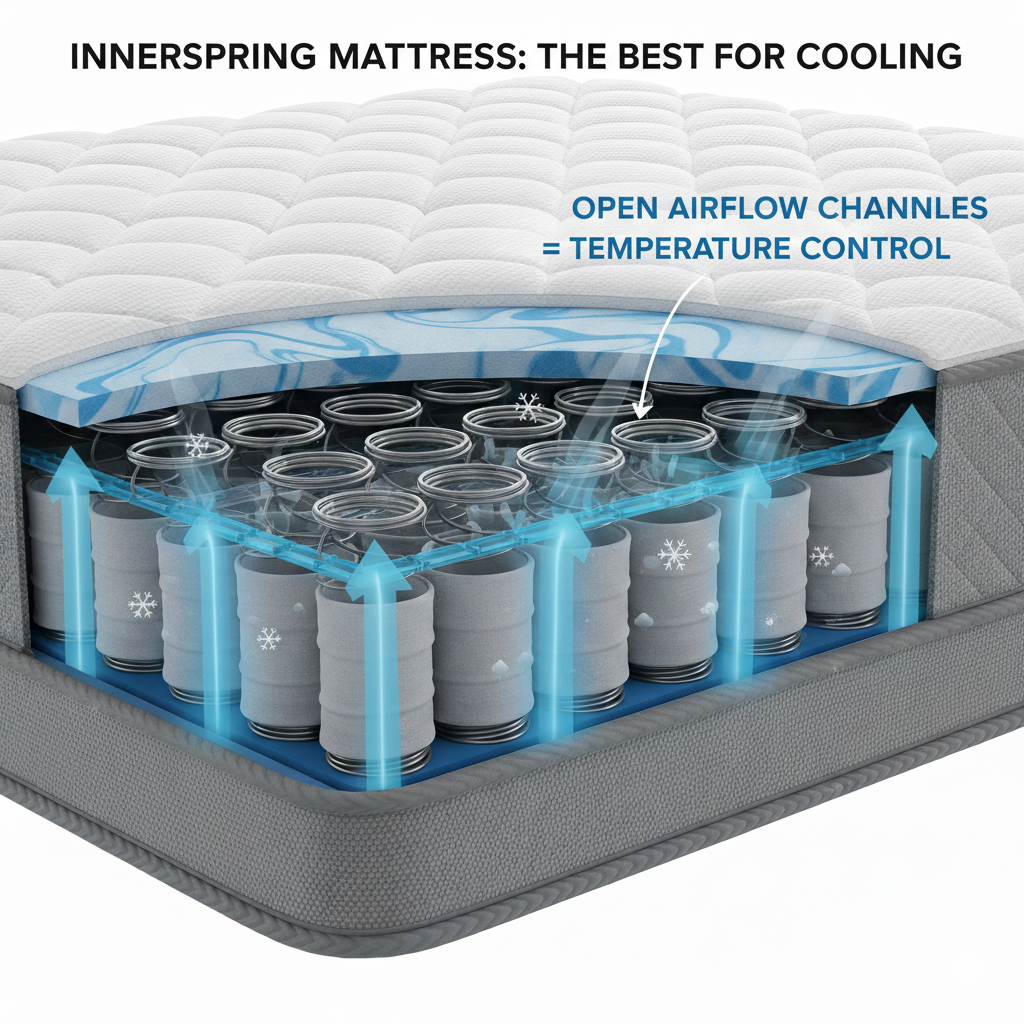
Certification Cheat Sheet (Answer First)
Certifications help verify safety and eco standards:
- GOLS: Global Organic Latex Standard for natural latex content.
- GOTS: Global Organic Textile Standard for cotton and wool covers.
- OEKO-TEX: Tests textiles and foams for harmful substances.
- CertiPUR-US: Ensures foams are free from heavy metals and certain flame retardants.

Buyer’s Guide: Match Material to Your Needs
The best bed material depends on your sleeping style:
- Side sleepers: Memory foam or plush hybrid for shoulder and hip relief.
- Back sleepers: Latex or medium-firm hybrid for neutral alignment.
- Stomach sleepers: Firm latex or coil-forward hybrid to prevent bowing.
- Hot sleepers: Innerspring or latex for better airflow.
- Light sleepers: Memory foam or pocketed-coil hybrids for motion control.
For deeper breakdowns, see our Cozy Bedding Materials Guide.
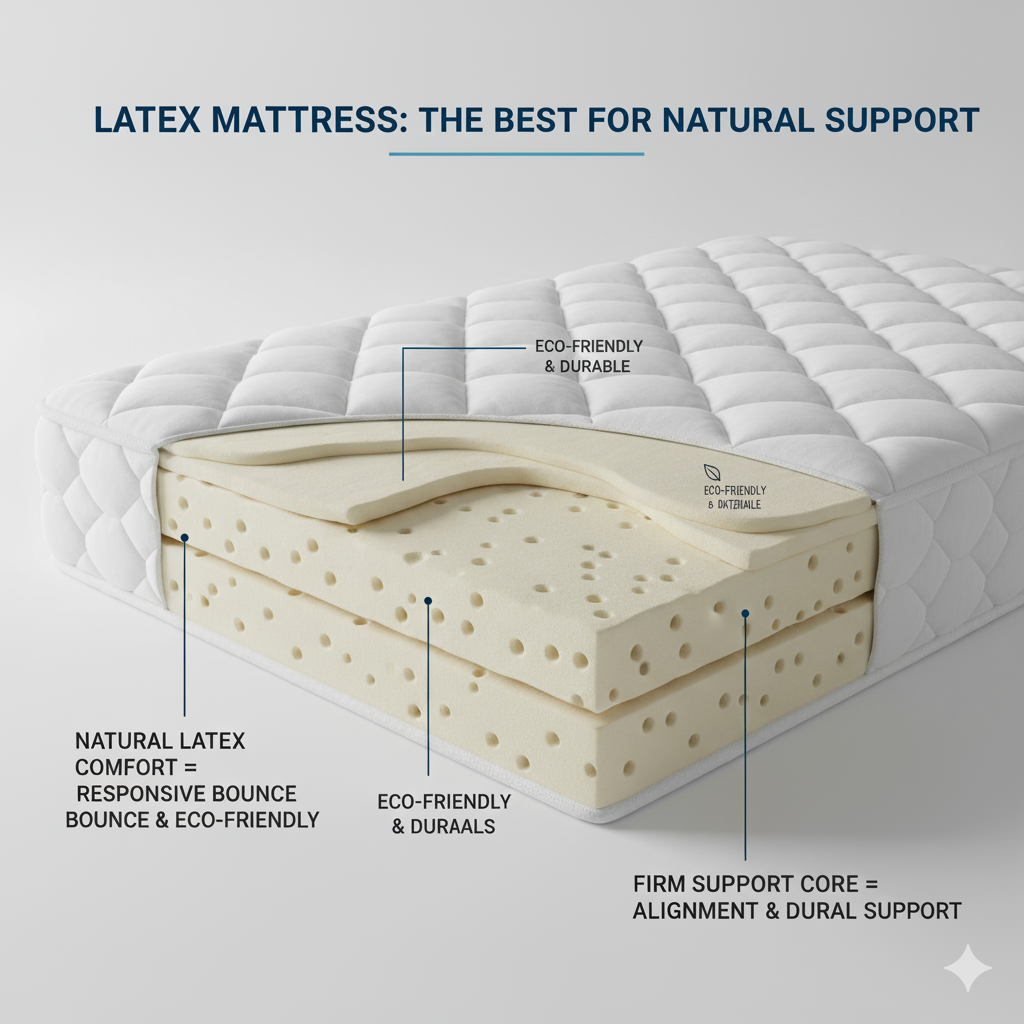
Cost, Longevity, and Value
Cost and durability vary by build:
- Innerspring: Value pricing; lifespan depends on coil build.
- Memory foam: Mid-range; density predicts longevity.
- Latex: Premium upfront, but excellent durability.
- Hybrids: Mid-to-premium; balanced performance.
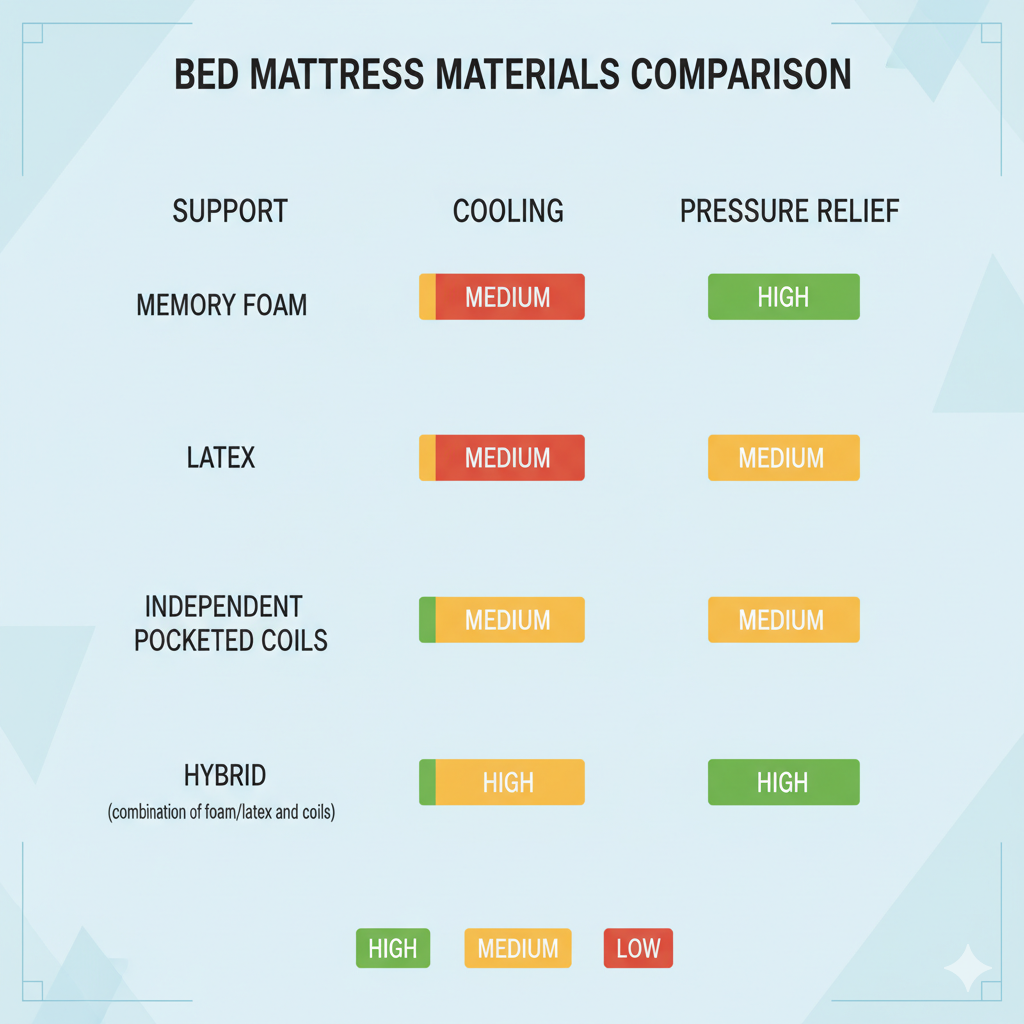
Environmental Impact of Best Bed Material Choices
Beyond comfort, each best bed material affects the environment. Memory foam uses petrochemicals and may off-gas VOCs. Innerspring coils are energy-intensive to manufacture but recyclable. Latex has a larger water footprint but biodegrades naturally. Hybrids balance these effects, especially when made with recycled steel and organic fabrics.
Eco-friendly upgrades reduce landfill waste and cut microplastics. Choosing natural textiles, responsibly harvested latex, and recycled metals helps align sleep comfort with sustainability goals.
Trusted Brand Examples
Seeing the best bed material in action helps narrow choices. Here are three trusted names often praised for balancing quality and sustainability:
- Brand A: Hybrid mattresses with GOLS latex and recycled steel coils.
- Brand B: Organic latex builds with OEKO-TEX certified covers.
- Brand C: CertiPUR-US memory foam options with cooling tech.
FAQ: Best Bed Material Questions
- What is the most durable bed material?
- Natural latex usually lasts the longest, often 12–20 years.
- Which bed material is best for hot sleepers?
- Innerspring and latex sleep coolest due to airflow and breathability.
- Are hybrids worth the cost?
- Yes. Hybrids blend coils with foam or latex for balanced support.
- What certifications should I prioritize?
- Look for GOLS, GOTS, OEKO-TEX, and CertiPUR-US for safety and sustainability.
Final Thoughts: Choosing the Best Bed Material
The best bed material comes down to your comfort needs and eco values. Memory foam offers plush contouring, latex provides buoyant natural support, innerspring boosts airflow, and hybrids balance it all. If sustainability matters, prioritize organic bedding and eco-certified cores. At Cozy Bed Quarters, we believe your sleep environment should feel good for you and the planet.

